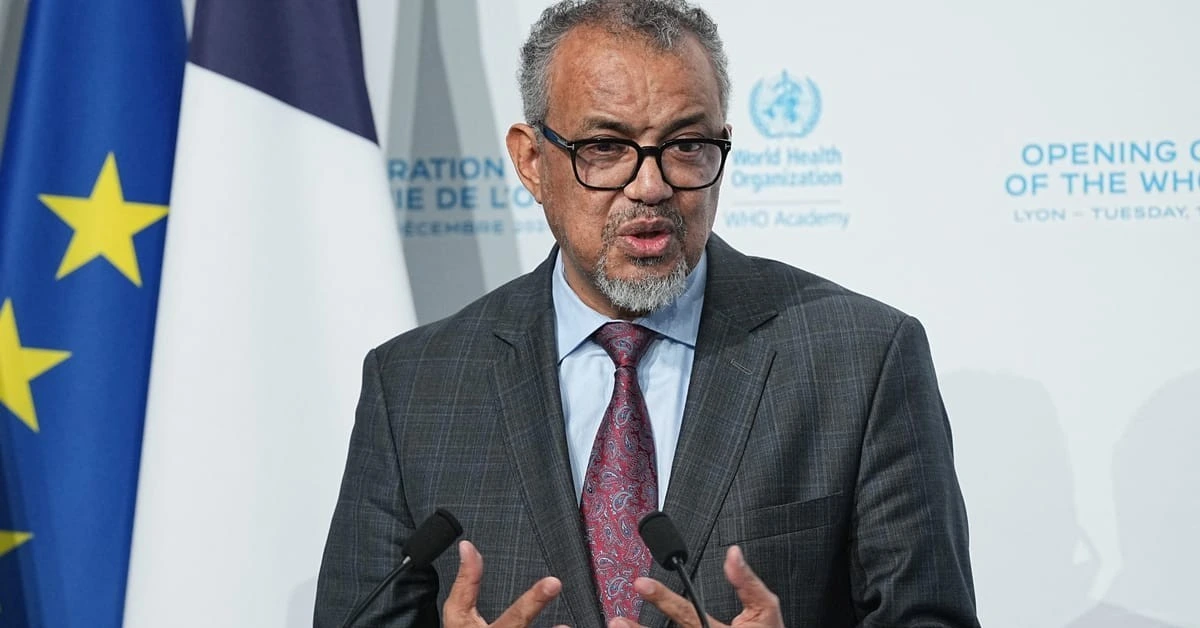
SWITZERLAND – The World Health Organization (WHO) has announced immediate cost-cutting measures in response to financial uncertainty triggered by the United States’ decision to withdraw from the global health body.
In an internal email sent late Thursday, WHO Director-General Tedros Adhanom Ghebreyesus outlined steps to address the funding shortfall.
These include freezing all but essential staff recruitment, prioritizing health-critical activities, significantly reducing travel, limiting procurement, and suspending office renovations.
Furthermore, all meetings will be conducted virtually unless deemed absolutely necessary, while only essential technical support missions to countries will proceed.
“This announcement has made our financial situation more acute,” Tedros stated, referring to the U.S. decision announced by President Donald Trump earlier in the week. He acknowledged the uncertainty this move has created for WHO staff.
The United States is WHO’s largest donor, contributing around 18% of its budget through both “assessed contributions” (membership fees) and “voluntary contributions” (donations earmarked for specific health programs).
For the 2024-2025 budget cycle, WHO’s total budget is US $6.83 billion, with the U.S. obligated to pay over US $261 million in membership fees.
In addition, the U.S. contributed over US $367 million in voluntary funds in 2023. The withdrawal, set to take effect in January next year, will have a profound impact on WHO’s operations.
More Cuts on the Horizon
Tedros cautioned that the current measures are only the beginning, with more reductions likely to follow.
He emphasized the need for solidarity among staff, urging them to propose ideas for resource mobilization and efficiency improvements.
“Change is a constant, and we are committed to continuous improvement,” he said, adding, “Navigating the challenges we face will require flexibility to adjust to member states’ needs and creativity in finding solutions.”
He reassured staff that WHO’s leadership remains committed to supporting and protecting them, acknowledging that the organization’s people are its greatest asset.
Ongoing financial reforms under threat
For over five years, WHO has been implementing financial reforms aimed at improving efficiency and reducing reliance on donor contributions, a process driven by pressure from influential member states.
In 2022, the World Health Assembly, led by Germany’s Björn Kümmel, adopted significant changes, including plans to increase member states’ assessed contributions from 16% of the budget to 50% by 2030.
Currently, over 80% of WHO’s budget relies on grants and voluntary contributions, which are often earmarked for specific activities, leading to a focus on donor priorities rather than the needs of member states.
To address this imbalance, WHO launched its first Investment Round last year to raise flexible funds for routine operations.
However, managing these grants remains a challenge. According to Kümmel, WHO is overseeing 3,300 grants with an average duration of just 13 months, a system he described as “everything else but predictable.”
Tedros also expressed embarrassment last year over the instability caused by financial constraints, which left many WHO staff on 60-day rolling contracts.
He noted that such precarious conditions undermine efforts to attract and retain talent.
Implications for Africa and global health challenges
The U.S. withdrawal threatens to derail WHO’s reform efforts, exacerbating the precarious situation for staff and complicating responses to growing global health challenges, many of which are intensified by climate change.
Dr. Matshidiso Moeti, WHO Africa director, highlighted during a 2022 roundtable that many staff members spend disproportionate amounts of time managing grants, while earmarked funds in Africa often prioritize communicable diseases, leaving limited resources for non-communicable conditions.
XRP HEALTHCARE L.L.C | License Number: 2312867.01 | Dubai | © Copyright 2025 | All Rights Reserved